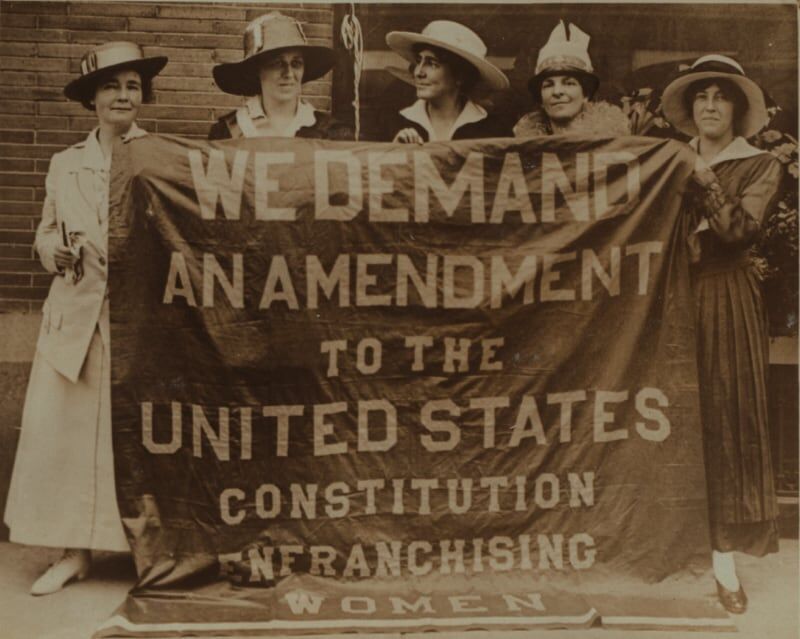The Quest for Women’s Suffrage (1848 – 1920)
Beginning in the early 1830s, a widening circle of women, and a few men, began encouraging greater participation by women in areas of society that were then the exclusive domain of men. In particular, women’s roles started to grow alongside the growth of the movement to abolish slavery and the push for prohibition. A woman’s right to vote became a primary focus.
1848
Women begin to seek the right to vote
Elizabeth Cady Stanton and Lucretia Coffin Mott organized the first convention on women’s rights in Seneca Falls, NY – what became known as the Seneca Falls Convention. The women presented and debated a “Declaration of Sentiments” that ended up including, with encouragement from Frederick Douglass, the sole African American to attend the convention, the women’s right to vote.
1869
First women get the vote
Wyoming became the first state to give women the right to vote.
1890
Women’s right to vote enshrined in Wyoming’s State Constitution
Wyoming was admitted to the union as the nation’s 44th state. Its constitution was the first state constitution to grant women the right to vote. Other western states followed.
1919
Congress passes 19th Amendment
The amendment to give women the right to vote passed in the US House of Representatives with substantially more votes than the two-thirds majority it needed. Two weeks later, it passed in the Senate with just two votes more than the required two-thirds majority.
1920
Women get the vote
The 19th Amendment to the U.S. Constitution was ratified, giving women the right to vote nationwide.


